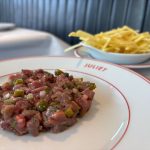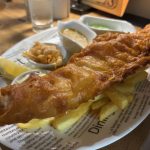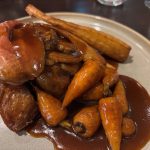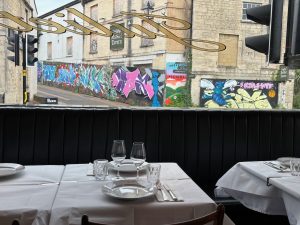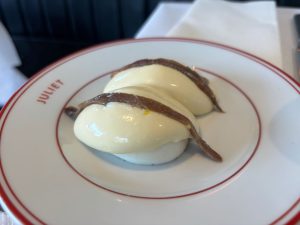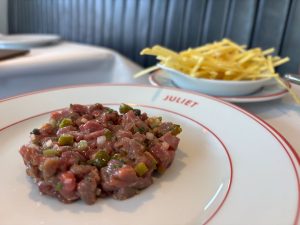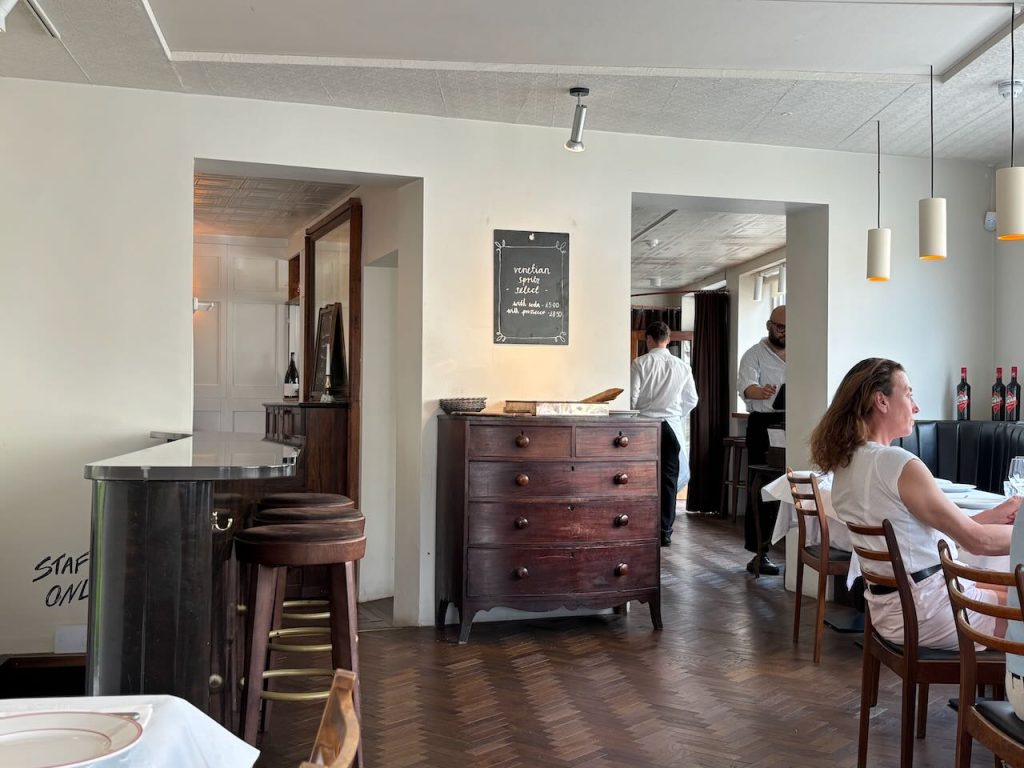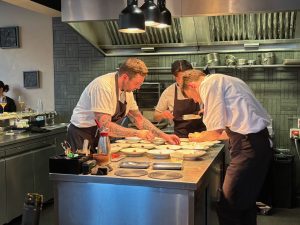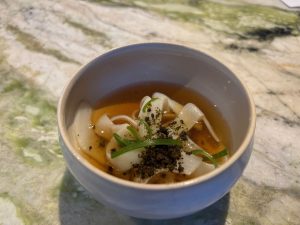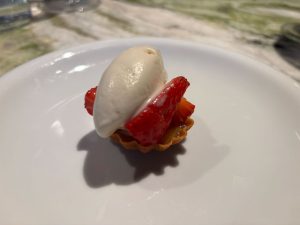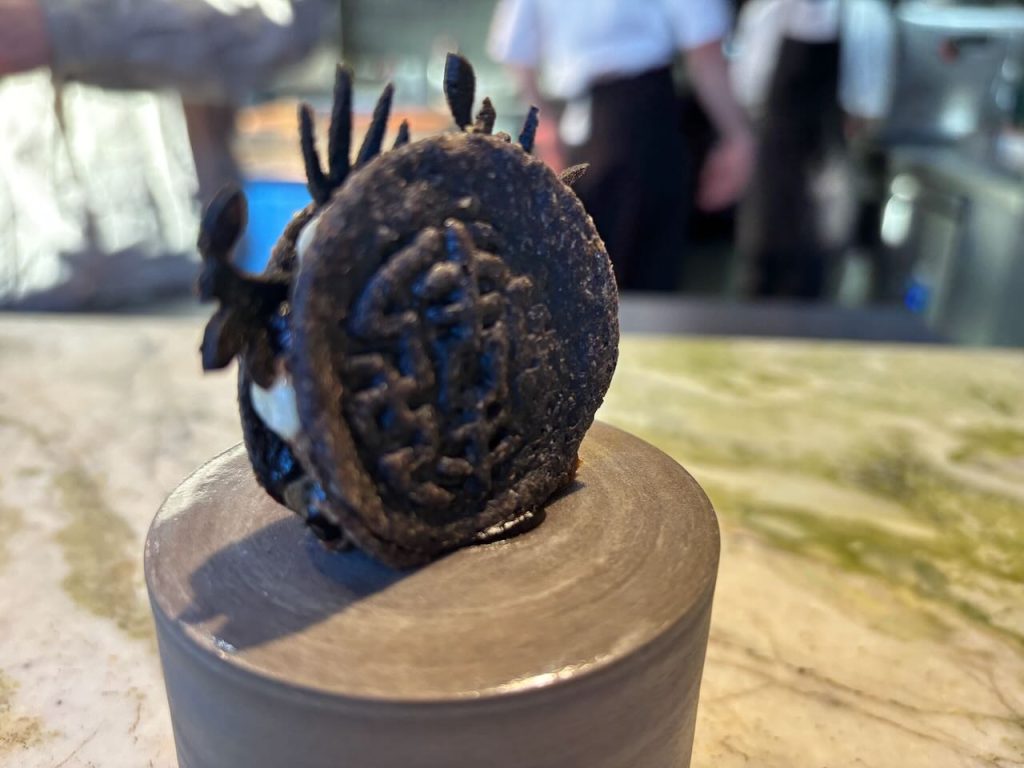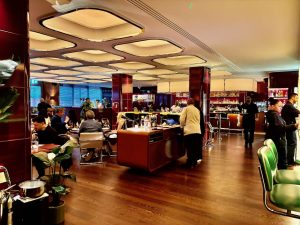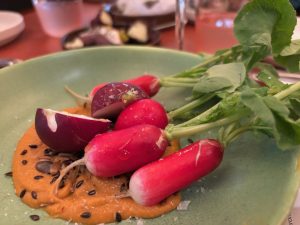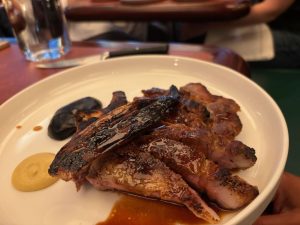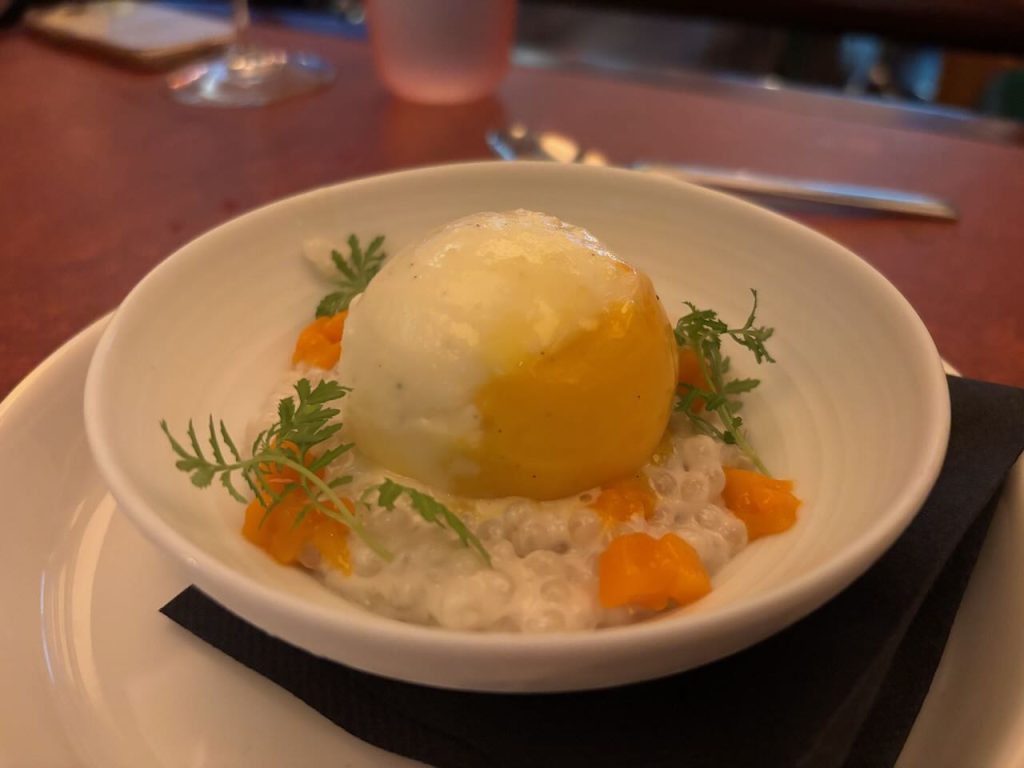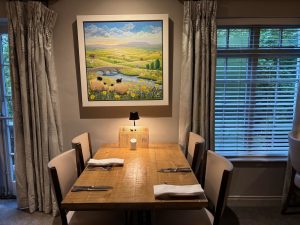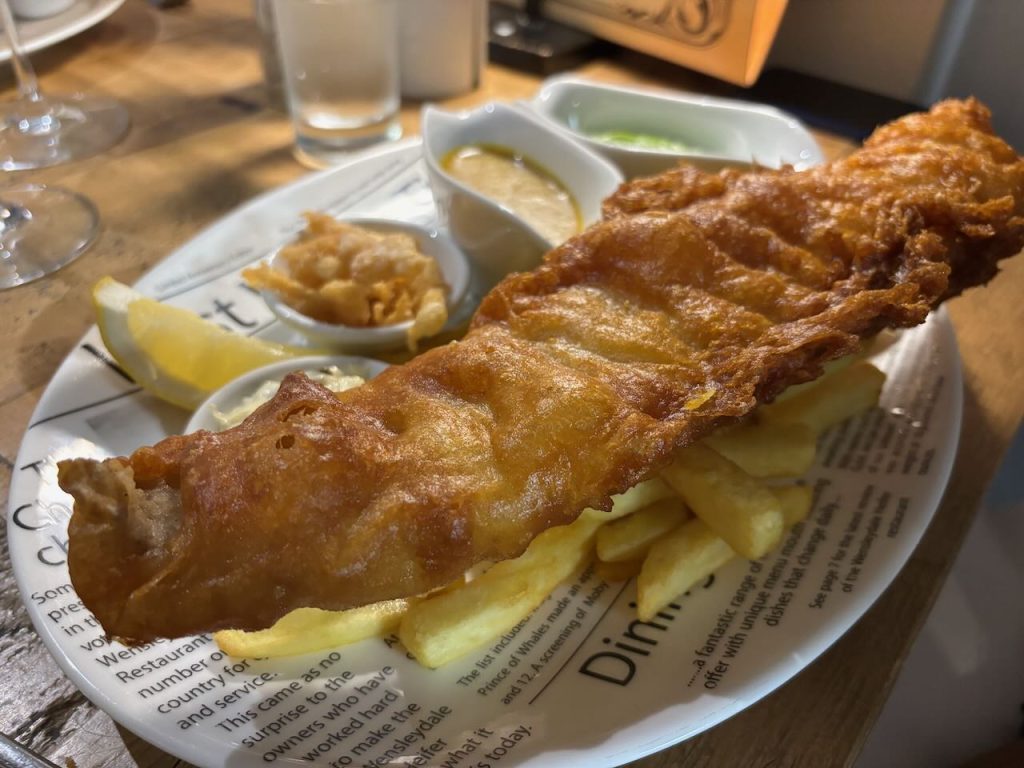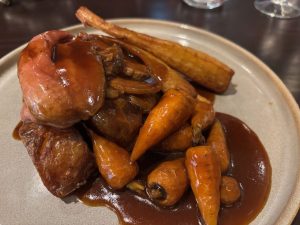It’s very incongruously situated on the edge of the town centre, surrounded by a boarded-up pub, a multi-storey car park and some colourful graffiti, but through the door you are effortlessly transported to a sort of idyll of a chi-chi Parisienne bistro. The walls are white, the wood furniture dark, the plates have red rims and “Juliet” printed on ’em. It’s very well done. And rather wonderfully, the food is even better. All done as plates meant for sharing.
We start with a couple of snacks. Oeufs mayonnaise: a boiled egg cut in half, topped with mayonnaise and a piece of salted anchovy. But it’s a spectacularly good mayonnaise, full-flavoured and sturdy, and its not often that the mayo gets to be the whole point and purpose of the dish. The other snack, a lovely light and salty bacalao on toast, is equally good.Thick spears of asparagus are insanely delicious with a fragrant Cafe de Paris sauce, peppy and just thick enough to cling lovingly to the spears. Another very simple salad of cucumber with broad beans and pecorino, dressed in tartly grassy olive oil and plenty of fresh oregano, works very well. We polish it off before our steak tartare arrives. They haven’t fiddled with this at all. If you ever need a type specimen of a beef tartare for the reference books, the one here at Juliet would fit the bill. Right down to the crisp shoestring fries that it’s impossible to stop eating.
The only larger plate we ordered was the hogget, as we felt we had to try something off the grill. Mmmm… and this piece goes straight in there as my favourite piece of lamb this year. Knocking various fine dining options off the top spot for sheer flavour in the meat, and the beautiful crisp cooking of the outside fat that made it too good to leave any. Served just with some fine beans, perfect for it.We just had room for a scoop of fig leaf ice cream to finish. It can’t pass without mention, because I have never had a fig leaf ice cream (or fig leaf anything) more packed with the vivid herbal-coconut-y flavour of fig leaves. Absolutely brilliant.
It would be £45 each for a big lunch including something sweet at the end. For the quality and pleasure of the meal, this is excellent value. It’ll be very hard to think about eating anywhere else, next time I find myself in Stroud.


